One of the first signs of spring, Crocus bulbs (properly called corms) bloom very early in spring sometimes when there is still snow on the ground! They provide great bursts of color in partial shade to full sun areas. These short plants (2-6” tall) multiply readily, returning year after year in Zones 3 to 8.
Cultivated varieties mainly represent five species, C.vernus, C. crysanthus, C.flavus, C. sieberi and C. tommasinianus. The first crocus seen in the Holland, where Crocus species are not native, were from corms brought back by the Holy Roman Emperor’s ambassador in the 1560s. There are about 80 species that exist. Shade variations of bright white, buttery yellow, and velvety purple as well as striped. They are a six petaled, chalice shaped flower accompanied by delicate green and white grasslike foliage. Crocus flowers and leaves are protected from frost by a waxy cuticle; in areas where snow and frost occasionally occur in the early spring.
Then there is also C. sativus(Saffron crocus) flower that bears three stigmas, each the distal end of a carpel. The stigmas are dried and used in cooking as a seasoning and coloring agent. Saffron is a spice that is native to Southwest Asia. (These do not naturalize)
Spring Blooming Crocus can generally be divided into two types: species(snow crocus) and hybrids(giant dutch). The species crocuses are famous for the unusual coloration their petals display and typically bloom earlier than the hybrids. The hybrid crocuses are noted for their large flowers and bloom slightly after the species, making for a prolonged bloom time when planted together in the same area.
C vernus( giant dutch) are large flowering crocuses that are among the most widely grown early spring bulbs. Each corm produces several upright, purple to white flowers with darker purple feathering or stripes on the outside. Typically grows 4-6” tall. Flowers close at night and open up in the morning, but usually remain closed on rainy/cloudy days. Many cultivars of this species have been developed.
- Jeanne d’Arc (white)
- Flower Record(violet-mauve)
- Pickwick (striped violet on bluish white background, deep violet base)
- Purpurea Grandiflora (deep purple)
- Remembrance (dark blue and purple with silvery gloss)
- Vanguard (silvery blue/violet outside, light purple inside)
- Yellow Mammoth (yellow)
C. tommasinianus(Woodland crocus, Tomasini’s crocus), often referred to as ‘Tommies’ were named after the botanist Muzio G. Spirito de Tommasini, who was mayor of the city of Triest. They are often referred to as early or snow crocuses, but these terms are shared with several other species, although C. tommasinianus is amongst the first to bloom. It is the smaller of the cultivated species. It naturalizes easily earning an official recognition as a weed. It grows wild in Bulgaria, Hungary and former Yugoslavia. It has a slender flower at about 3” in height.
- Ruby Giant(
- Whitewell Purple(silvery reddish purple flowers, pale mauve on the inside)
- Barr’s Purple(amethyst violet)
- Lilac Beauty(purple)
C. chrysanthus(snow crocus) species grows wild in places like Greece, Balkans and Turkey with vivid orange-yellow flowers has smaller bulbs and, therefore, smaller flowers (3-4” in height) than the Giant Dutch Crocuses. However, it produces more flowers per bulb than the Dutch Crocus, and typically blooms about 2 weeks earlier than the Dutch Crocus.
- Advance (peachy yellow inside, violet outside)
- Blue Pearl (pale lavender blue)
- Dorothy ( yellow with bronze stripes)
- Blue Peter (midnight blue outside, palest blue within)
- Cream Beauty (soft creamy yellow)
- Goldilocks (canary yellow)
- Lady Killer (deep violet purple outside, white inside, pointed petals)
- Prins Claus (white with dark purple blotches on outside)
- Romance (inside creamy, outside blueish)
- Saturnus (yellow inside, dark purple)
- Skyline (inside light blue, outside bright blue)
- Snowbunting (white with yellow center)
- Zwanenburg Bronze (bronze with yellow)
- Ard Schenk (white with bronze throat)
C. sieberi (snow crocus) also referred to as the Cretan crocus is a small early blooming crocus, it easily naturalizes. It grows wild in the Balkans, Greece and Crete.
- Violet Queen (deep amethyst-violet flowers, paler within
- Tricolor (gold centre, middle white band, outer rich lilac-blue edge)
- Firefly (lilac)
- Bowles White (white with orange centre)
- Hubert Edelsten (outside deep purple with white bands, inside lilac with orange)
- Ronald Ginns (pale pink to white petals with dark purple on outside with yellow throat)
C. flavus(Dutch Yellow Crocus)grows wild on the slopes of Greece, former Yugoslavia, Bulgaria, Romania and North West Turkey with bright orange-yellow flowers. It is a small crocus (2-2.5” in height). This one has the richest of coloring of the
- Golden Yellow (Dutch Yellow/,Yellow Mammoth)
No serious insect or disease problems occur with crocus, but squirrels, mice and other rodents can be problems. Squirrels seem particularly adept at locating, digging up and eating newly planted corms. Making sure you clean up and/or do not leave packaging lying around is very important, since they have a good sense of smell. A good prevention is to also cover the area where you are planting the bulbs with chicken wire. It works well at deterring rodents from stealing your crocus bulbs.











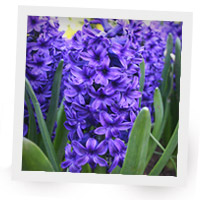


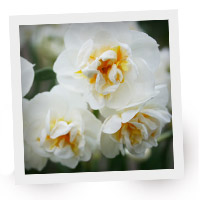
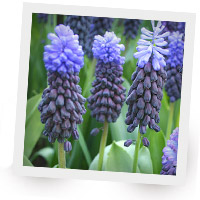

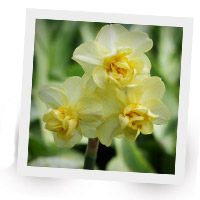
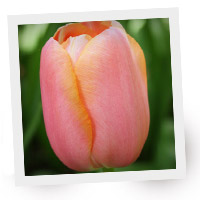
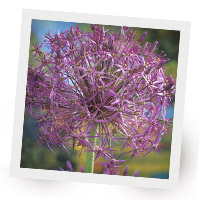
Hello there, I just would like to give a huge thumbs up for the great info you have here on this post. I will be coming back to your blog for more soon. 😀
Im glad you did! Have a great day!
Really informative blog post.Really looking forward to read more. Keep writing.
thanks! Glad you found flowerbulbcrazy! Have a great week!
Thanks for the blog.Really looking forward to read more. Will read on…
Thanks!
Ifjjnp Appreciate you sharing, great article post.Really looking forward to read more. Great.
Very nice post. I just stumbled upon your weblog and wished to say that I have truly enjoyed surfing around your blog posts. After all I will be subscribing to your feed and I hope you write again very soon!
I’m still learning from you, while I’m trying to achieve my goals. I absolutely enjoy reading all that is posted on your website.Keep the information coming. I liked it!
I have been checking out many of your articles and i can state pretty nice stuff. I will surely bookmark your website.
Wonderful! Thanks!